Bruxelas pelos Meus Olhos – Uma Viagem no Tempo e na Emoção
📍 Quarta-feira, 26 de Junho de 2023 (final da tarde)
Já a meio da tarde, senti um impulso repentino de me afastar por um momento e mergulhar na alma da cidade. Enquanto o grupo seguia no ritmo animado das conversas e das cervejas, deixei-me levar pelas ruas de Bruxelas, apenas com o telemóvel no bolso, os olhos bem abertos e o coração disponível para o que viesse. Queria respirar a cidade, senti-la nos detalhes. Saí sozinha pelas ruas de Bruxelas, deixando para trás o barulho alegre do grupo e mergulhando na história viva desta cidade fascinante.
Bruxelas não é apenas a capital da Bélgica; é um mosaico de memórias, culturas e surpresas. No centro histórico, cada pedra parece contar uma história.
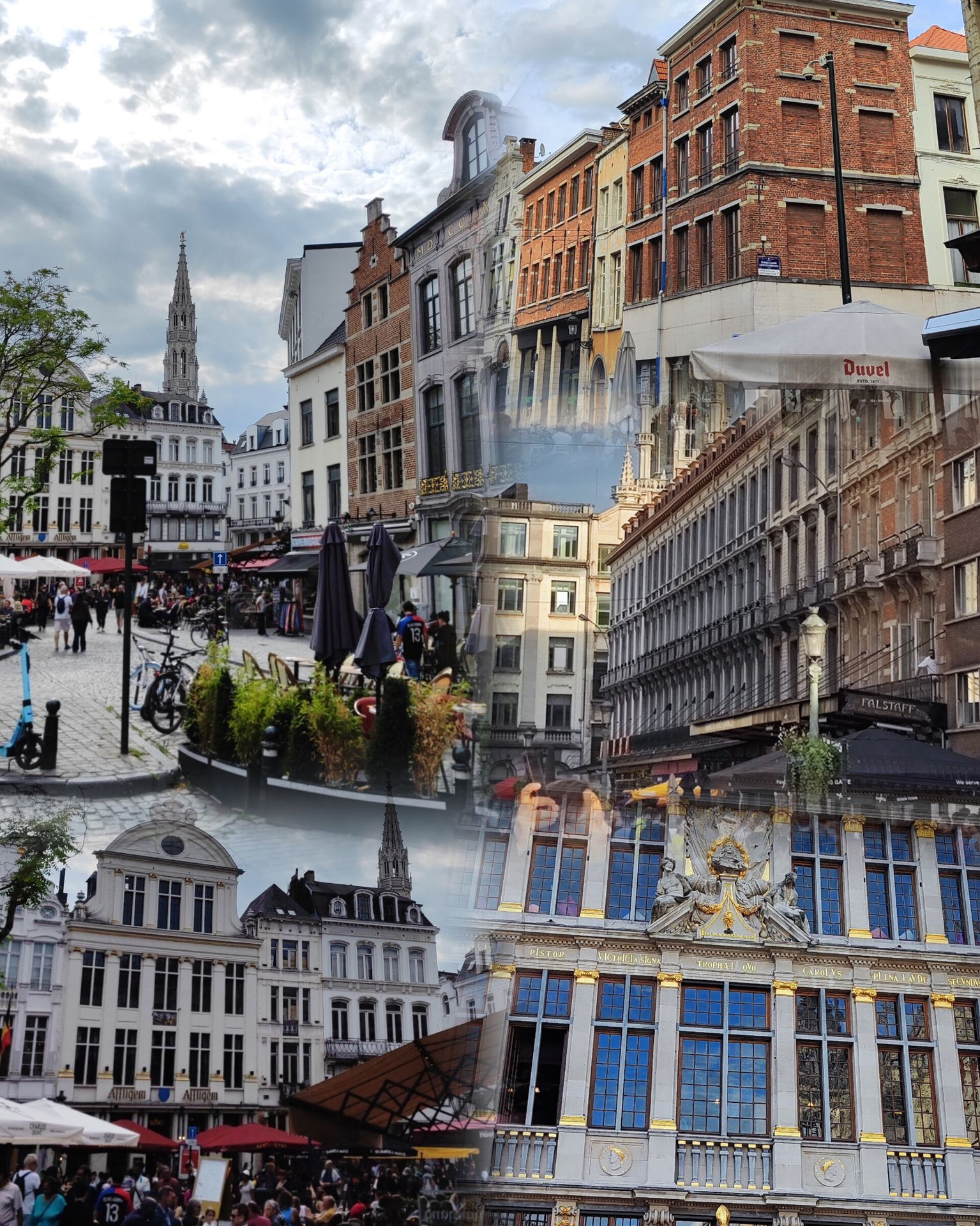
Depois daquele momento de contemplação solitária no coração da cidade, voltei a perder-me – de propósito – pelas ruas que rodeavam o nosso ponto de encontro. O The Big Game, que ficava numa esquina movimentada mas acolhedora, era cercado por ruelas encantadoras que revelavam a verdadeira essência de Bruxelas.
Ali perto, a Rue du Marché aux Poulets conduzia-me numa espécie de dança entre lojas contemporâneas e pequenos cafés locais. Era uma rua de transição, onde o murmúrio da cidade moderna se encontrava com fachadas antigas, de janelas altas e toldos vermelhos. As pessoas passavam tranquilas, de passo leve, como se a pressa não tivesse lugar aqui. E sentia-me em paz, observando a harmonia entre o novo e o antigo.
Segui pela Rue des Fripiers, onde o comércio vibrava em tons mais jovens, com grafitis discretos nos muros e vitrinas cheias de identidade. E foi numa travessa ali perto que me deparei com algo que me fez sorrir: um mural colorido do Tintin. A arte de Hergé está por toda a cidade, como um lembrete constante da alma criativa e visionária de Bruxelas. Era como tropeçar num pedacinho da minha infância – e de tantas outras pelo mundo. Terra dos Smurfs, do cowboy Lucky Luke, a Bélgica orgulha-se de ser o país com a maior concentração de artistas de banda desenhada do mundo. Lá, a banda desenhada deixou de ser apenas uma atividade popular para se tornar uma arte reconhecida, que faz parte do quotidiano das pessoas.
Continuei a caminhar pela Rue de la Fourche, onde os edifícios de pedra clara e varandas floridas contrastavam com o ritmo cosmopolita da cidade. Era impossível não reparar como tudo estava limpo, organizado e respeitado. Havia civismo no ar. Ninguém precisava de gritar para ser ouvido. Bruxelas impunha-se com educação e elegância.
Mais à frente, entre a Rue Grétry e a Rue du Marché aux Herbes, encontrava-se uma zona vibrante, cheia de vida. Artistas de rua tocavam melodias que ecoavam por entre as paredes dos edifícios, enquanto turistas saboreavam os típicos waffles belgas em filas animadas. A cidade pulsava, mas sem nunca perder a calma. Era uma energia fluida, acolhedora.
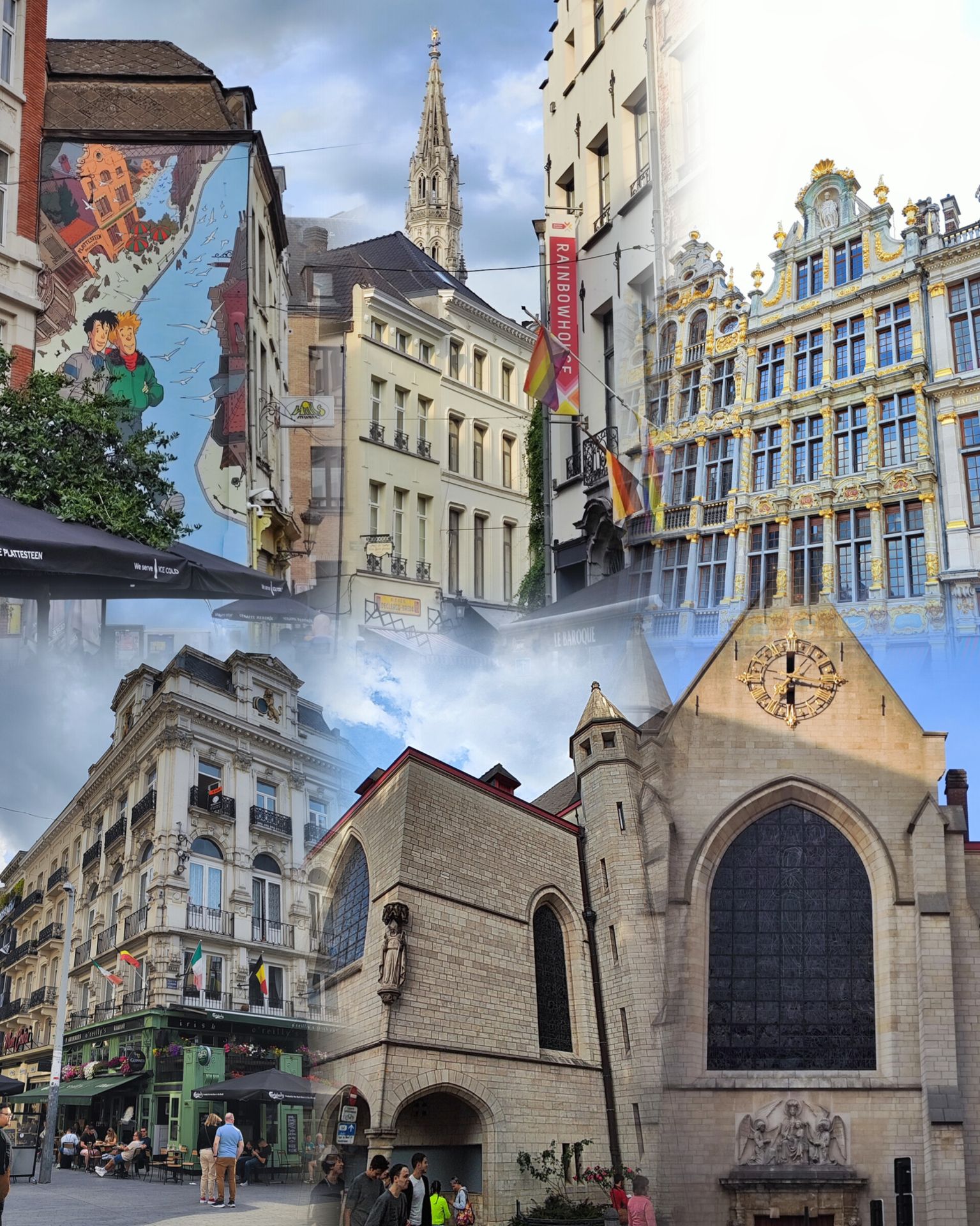
E no coração de tudo, erguia-se a Grand-Place (Grote Markt), a praça central de Bruxelas. Esta verdadeira joia arquitetónica, classificada como Património Mundial da UNESCO, é rodeada por edifícios majestosos do século XVII, incluindo a impressionante Câmara Municipal (Hotel de Ville), com a sua torre gótica e esculturas intrincadas. Do outro lado, a Maison du Roi, hoje o Museu da Cidade, preserva a história rica e multifacetada da capital belga.
A poucos passos, encontrava-se o Manneken Pis, a pequena mas icónica estátua de bronze de um menino a urinar, símbolo do espírito irreverente de Bruxelas. Apesar da sua dimensão modesta, atrai multidões curiosas e muda frequentemente de vestuário, conforme as festividades do momento.
Também visitei as Galeries Royales Saint-Hubert, uma das primeiras galerias comerciais cobertas da Europa. Com o seu teto envidraçado e lojas elegantes, este espaço é uma ode ao requinte e à história comercial da cidade.
Nas vitrinas das chocolaterias, os bombons artesanais eram expostos como joias. As livrarias exibiam edições raras e edições bilingues. E o mais bonito era que, em cada recanto, se podia sentir uma convivência natural entre a tradição e a modernidade. Como se o tempo não fosse um inimigo, mas sim um aliado.
A certa altura, parei e respirei fundo.
Havia em Bruxelas algo profundamente reconfortante. Talvez fosse o modo como a cidade cuida do seu passado sem se aprisionar nele. Ou talvez fosse a forma como acolhe pessoas de todo o mundo com um sorriso, sem perder a sua identidade. Senti-me segura, inspirada e, acima de tudo, bem-vinda.
É raro sentir isso tão forte numa primeira visita. Mas ali, naquela rede de ruelas cheias de história e arte, entre o aroma a chocolate quente e o reflexo dourado das pedras antigas ao pôr do sol, percebi que Bruxelas já me tinha conquistado. Era, sem dúvida, uma cidade onde me imagino a voltar.
Nas vitrinas das chocolaterias, os bombons artesanais eram expostos como joias. As livrarias exibiam edições raras e edições bilingues. E o mais bonito era que, em cada recanto, se podia sentir uma convivência natural entre a tradição e a modernidade. Como se o tempo não fosse um inimigo, mas sim um aliado.
Além dos locais que já mencionei, não poderia deixar de falar da imponente Catedral de São Miguel e Santa Gudula. Esta catedral gótica, com as suas duas torres simétricas que se destacam no horizonte, é um marco espiritual e arquitetónico da cidade. No interior, vitrais coloridos contam histórias religiosas que datam do século XIII, oferecendo um ambiente de tranquilidade e introspeção em pleno centro urbano. Passar por ali é como sentir o coração histórico e religioso de Bruxelas a bater forte.
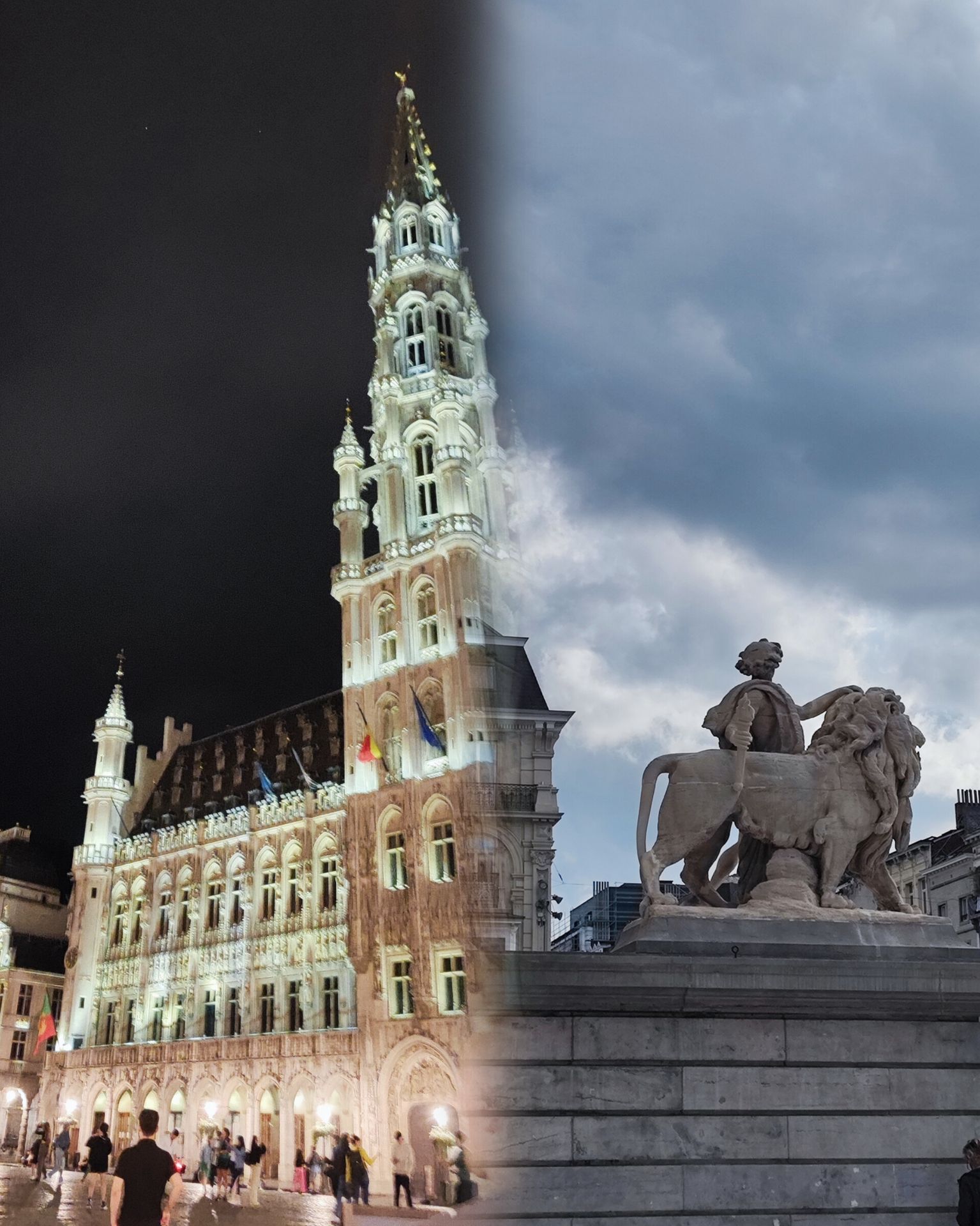
Ainda na zona cultural, o Mont des Arts é um espaço que conjuga arte, história e natureza. Situado num ponto elevado, oferece uma vista panorâmica da cidade e alberga museus importantes, jardins cuidados e eventos culturais ao longo do ano. É um convite à contemplação, ao encontro com a criatividade e à inspiração.
E não poderia deixar de mencionar o Palácio Real de Bruxelas, residência oficial do Rei da Bélgica. Embora não seja habitado permanentemente, o seu exterior impressiona pela grandiosidade e pela arquitetura neoclássica. É um símbolo do Estado e da tradição, mas também um espaço aberto ao público em certas épocas, permitindo que todos se sintam parte da história viva do país.
Passear por estas áreas faz-me sentir uma ligação profunda com uma cidade que sabe preservar a sua identidade, abraçando a modernidade sem perder o respeito pelo passado. É este equilíbrio, esta mistura de encanto, paz, história e organização que torna Bruxelas uma cidade verdadeiramente especial.
A cidade surpreendeu-me. Bruxelas respira história em cada esquina. As fachadas dos prédios parecem saídas de livros antigos, com detalhes esculpidos que contam séculos de existência. Os becos estreitos abrem-se de repente em praças amplas, cheias de vida e movimento. A Grand-Place, imponente e dourada, arrancou-me um suspiro – é daquelas que não se esquece.
Mas há também uma Bruxelas jovem e pulsante, onde as bicicletas disputam espaço com os turistas, os cafés vibram com gente de todas as idades, e a arte urbana colore as paredes com mensagens de liberdade, amor e revolução. Era como se a cidade dançasse entre o antigo e o contemporâneo, entre o silêncio dos seus museus e o som de uma guitarra acústica tocada por um artista de rua.
Vi turistas encantados a fotografar cada detalhe, casais de mãos dadas a perderem-se por entre ruas desconhecidas, grupos de amigos a partilhar gargalhadas à porta dos bares. E no meio disso tudo, os habitantes locais, tranquilos, quase cúmplices, observavam com um sorriso discreto quem ali passava, como se soubessem que estão a viver num lugar especial.
As sensações eram de leveza e descoberta. Era como caminhar num sonho onde tudo parecia encaixar — os cheiros dos waffles acabados de fazer, o som distante de uma fonte, o calor suave do sol entre nuvens.
Foi uma dessas pequenas pausas que, sem grandes planos, acaba por se tornar um dos pontos altos da viagem. Voltei ao ponto de encontro já ao anoitecer, de coração cheio, com uma nova ligação com a cidade e uma leve embriaguez... não só da boa cerveja belga, mas do encantamento puro por aquele lugar.
(Version EN)
Brussels Through My Eyes – A Journey Through Time and Emotion
📍Wednesday, June 26th, 2023 (late afternoon)
By mid-afternoon, I felt a sudden urge to step away for a moment and dive into the soul of the city. While the group continued at the lively pace of conversation and beers, I let myself wander through the streets of Brussels, with only my phone in my pocket, my eyes wide open, and my heart ready for whatever might come. I wanted to breathe in the city, to feel it in the details. I walked alone through the streets of Brussels, leaving behind the cheerful noise of the group and immersing myself in the living history of this fascinating city.
Brussels is not just the capital of Belgium; it’s a mosaic of memories, cultures, and surprises. In the historic centre, every stone seems to tell a story.
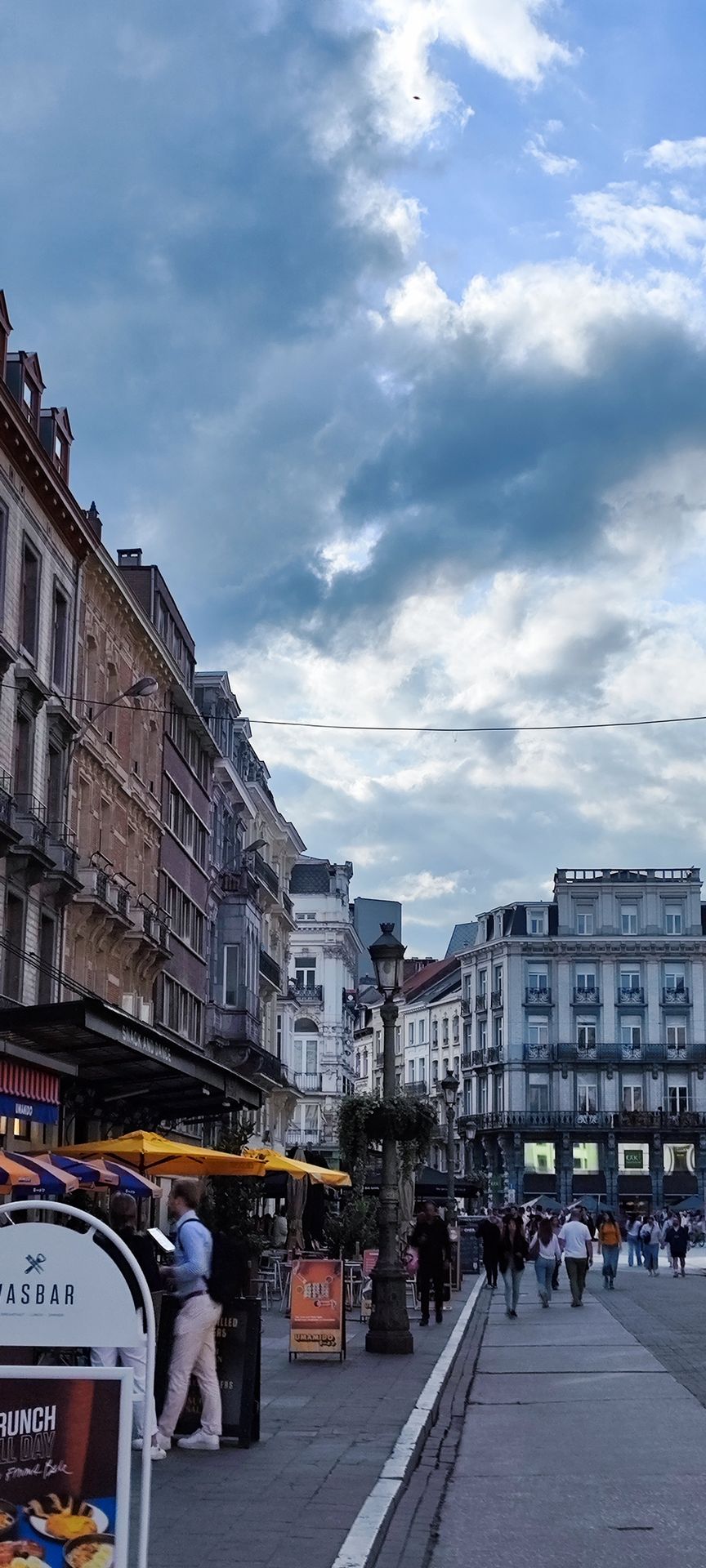
After that moment of solitary contemplation in the heart of the city, I once again let myself get lost—deliberately—through the streets surrounding our meeting point. The Big Game, located on a busy yet welcoming corner, was surrounded by charming little streets that revealed the true essence of Brussels.
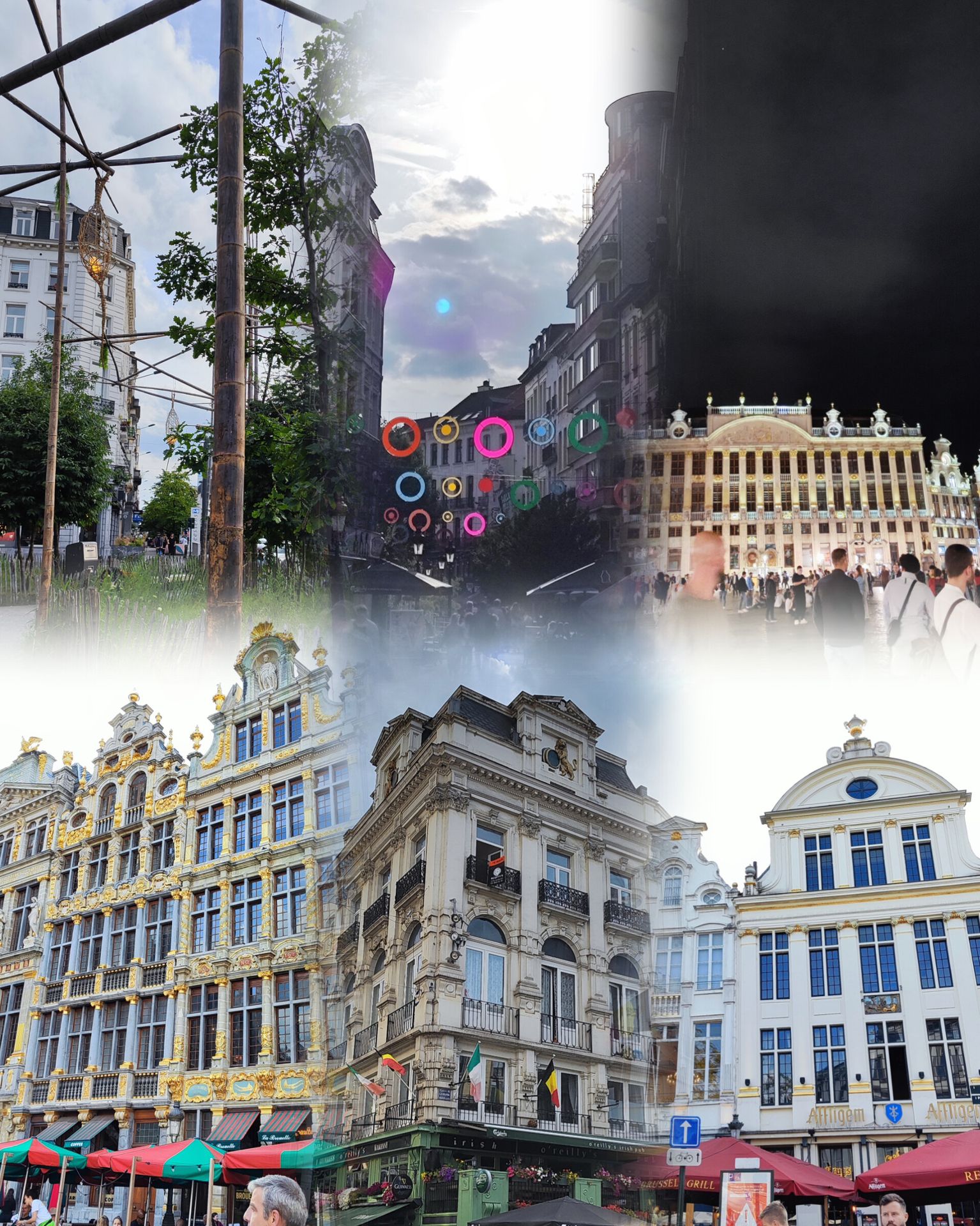
Nearby, Rue du Marché aux Poulets led me in a kind of dance between contemporary shops and small local cafés. It was a transitional street, where the murmur of the modern city met old façades with tall windows and red awnings. People passed by calmly, with light steps, as if haste had no place here. And I felt at peace, observing the harmony between the old and the new.
I continued along Rue des Fripiers, where the shops pulsed with a younger vibe, with subtle graffiti on the walls and storefronts full of personality.
Hergé's art is everywhere in the city, a constant reminder of Brussels' creative and visionary soul. It felt like stumbling upon a small piece of my childhood — and of so many others around the world.
Home to the Smurfs and the cowboy Lucky Luke, Belgium proudly holds the title of the country with the highest concentration of comic book artists in the world. There, comic art has gone beyond being merely a popular pastime to become a recognised form of art, deeply woven into the fabric of everyday life.
I kept walking along Rue de la Fourche, where light-stone buildings with flowered balconies contrasted with the city’s cosmopolitan rhythm. It was impossible not to notice how everything was clean, organized, and respected. There was a sense of civility in the air. No one needed to shout to be heard. Brussels asserted itself with politeness and elegance.
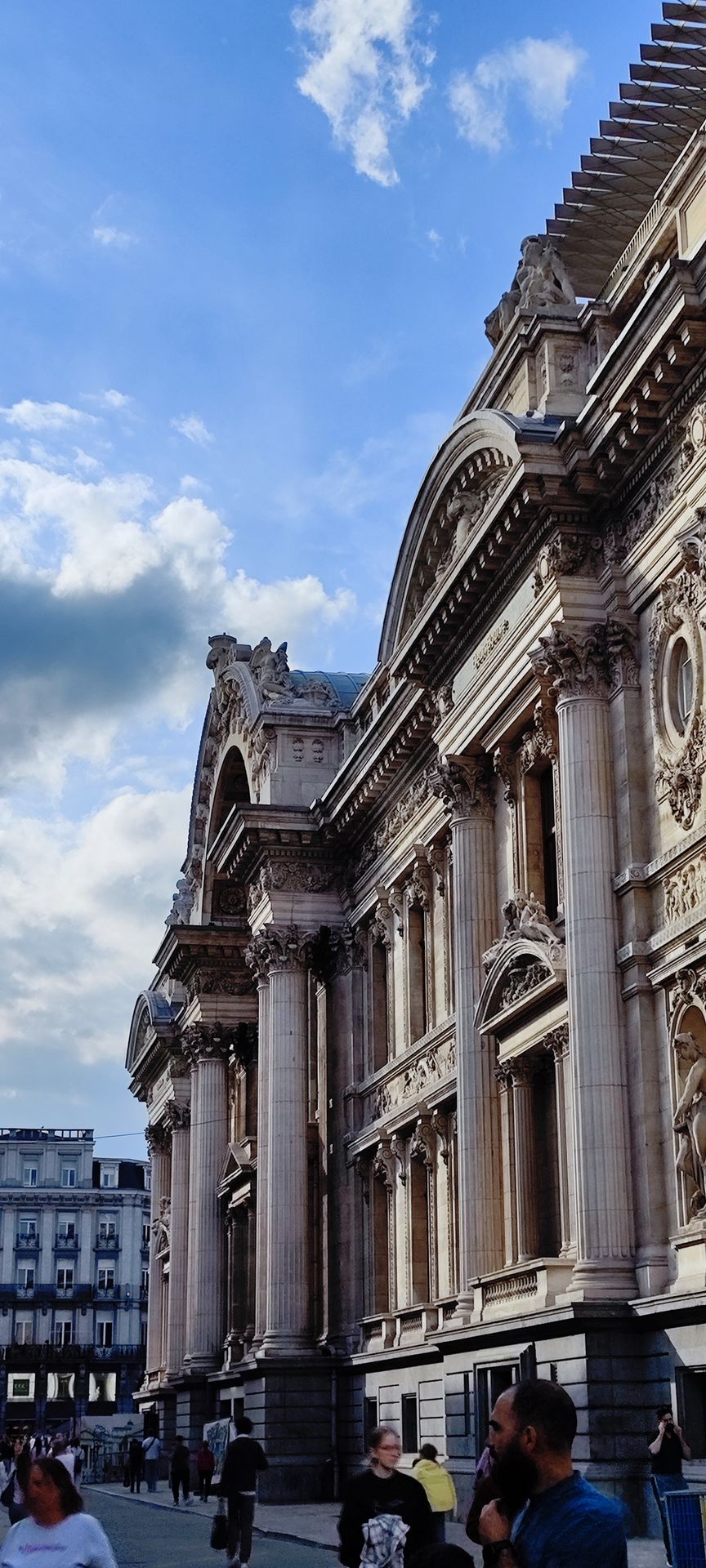
Further ahead, between Rue Grétry and Rue du Marché aux Herbes, I reached a vibrant, lively area. Street artists played melodies that echoed off the buildings, while tourists enjoyed classic Belgian waffles in cheerful lines. The city pulsed, but never lost its calm. It was a fluid, welcoming energy.
And at the heart of it all stood the Grand-Place (Grote Markt), the central square of Brussels. This true architectural gem, classified as a UNESCO World Heritage Site, is surrounded by majestic 17th-century buildings, including the impressive City Hall (Hôtel de Ville) with its Gothic tower and intricate sculptures. Opposite it, the Maison du Roi — now the City Museum — preserves the rich, multifaceted history of the Belgian capital.
Just a few steps away was the Manneken Pis, the small yet iconic bronze statue of a urinating boy, symbol of Brussels’ irreverent spirit. Despite its modest size, it draws curious crowds and frequently changes outfits according to the season or local festivities.
I also visited the Galeries Royales Saint-Hubert, one of the first covered shopping arcades in Europe. With its glass ceiling and elegant shops, this space is an ode to refinement and the city’s commercial history.
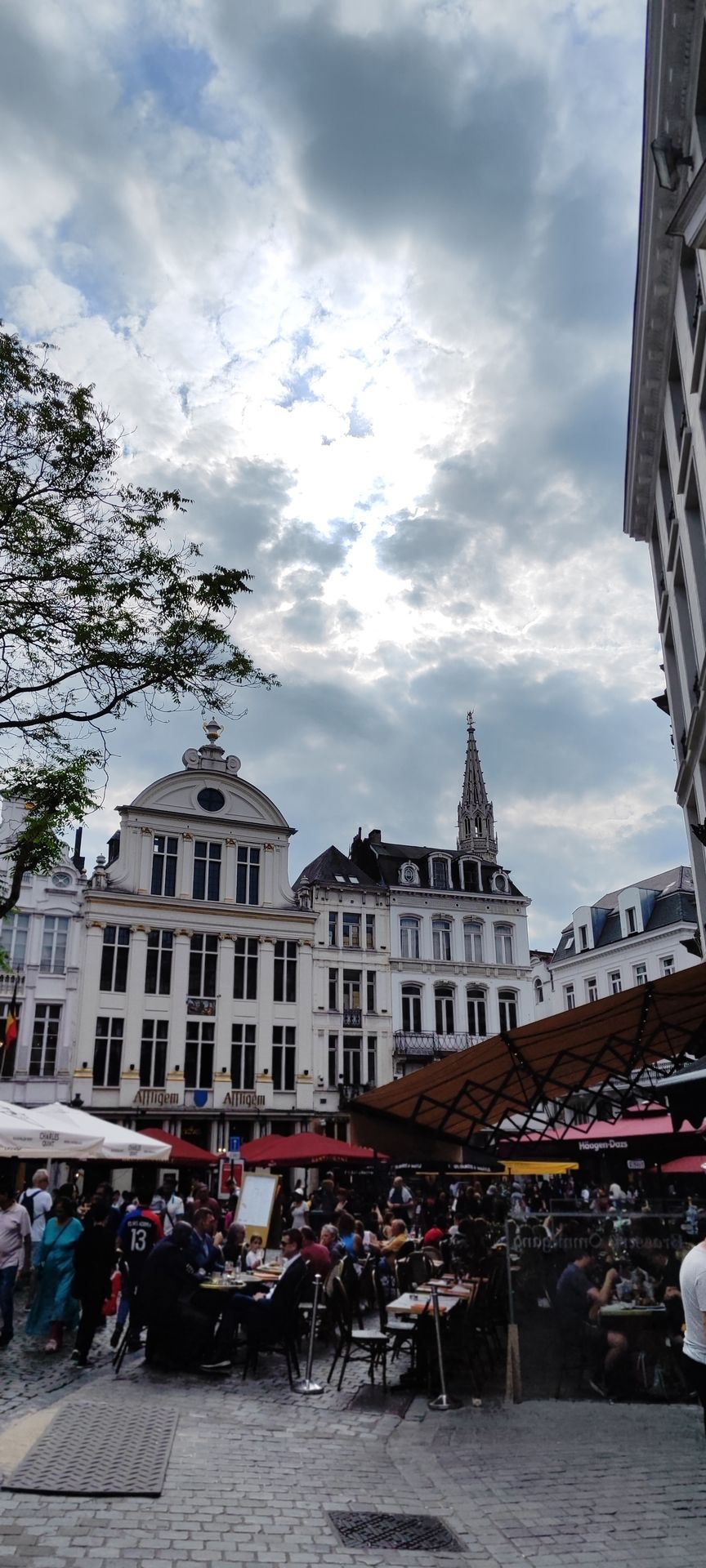
In the chocolatiers' windows, handmade pralines were displayed like jewels. Bookshops showcased rare editions and bilingual books. And the most beautiful part was that, on every corner, one could feel a natural coexistence between tradition and modernity. As if time were not an enemy, but an ally.
At one point, I paused and took a deep breath.
There was something deeply comforting about Brussels. Perhaps it was the way the city cares for its past without being trapped in it. Or maybe it was the way it welcomes people from all over the world with a smile, without losing its identity. I felt safe, inspired, and above all, welcomed.
It’s rare to feel that so strongly on a first visit. But there, in that network of alleys full of history and art, among the scent of warm chocolate and the golden glow of old stones at sunset, I realised Brussels had already won me over. It is, without a doubt, a city I can see myself returning to.

In the chocolatiers’ windows, handmade pralines were displayed like jewels. Bookshops showcased rare editions and bilingual prints. And the most beautiful thing was that, in every corner, there was this effortless blend of tradition and modernity. As if time were not an enemy, but an ally.
Beyond the places I’ve already mentioned, I must also talk about the imposing Cathedral of St. Michael and St. Gudula. This Gothic cathedral, with its two symmetrical towers rising above the skyline, is a spiritual and architectural landmark of the city. Inside, colourful stained-glass windows tell religious stories dating back to the 13th century, offering an atmosphere of tranquility and introspection in the heart of the urban centre. Passing through is like feeling the historical and religious heartbeat of Brussels.
Still within the cultural zone, the Mont des Arts is a space that brings together art, history, and nature. Situated on a raised plateau, it offers a panoramic view of the city and houses important museums, manicured gardens, and cultural events throughout the year. It’s an invitation to contemplation, to encounter creativity, and to be inspired.
And I mustn’t forget to mention the Royal Palace of Brussels, the official residence of the King of Belgium. Though not permanently inhabited, its exterior impresses with its grandeur and neoclassical architecture. It’s a symbol of the state and tradition, but also an open space to the public at certain times, allowing everyone to feel part of the country’s living history.
Strolling through these areas makes me feel deeply connected to a city that knows how to preserve its identity while embracing modernity without losing respect for the past. It’s this balance — this blend of charm, peace, history, and order — that makes Brussels truly special.
The city surprised me. Brussels breathes history at every corner. The façades of the buildings look like they came out of old books, with sculpted details telling stories of centuries past. Narrow alleys suddenly open into wide, lively squares full of movement. The Grand-Place, majestic and golden, took my breath away — it’s one of those places you never forget.
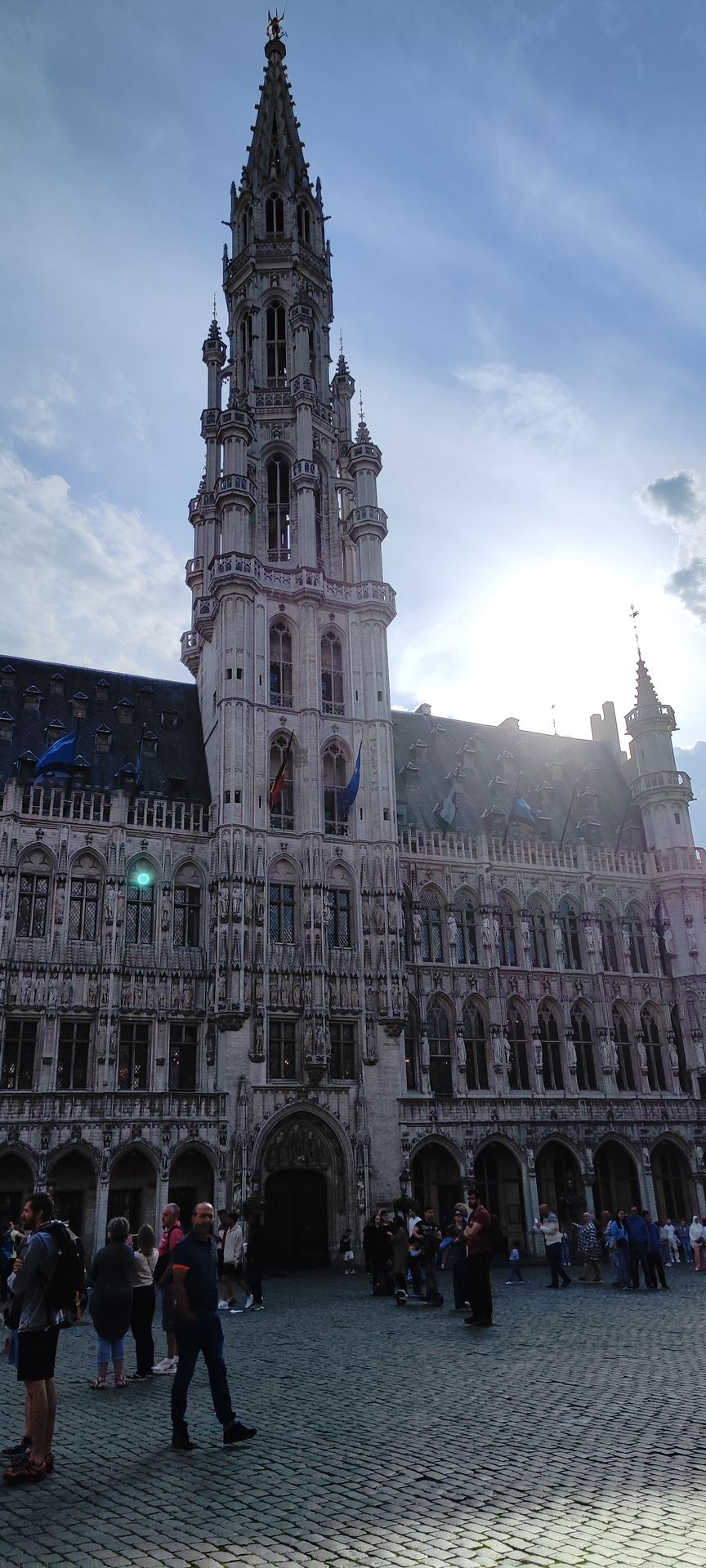
But there’s also a young and vibrant Brussels, where bicycles compete for space with tourists, cafés buzz with people of all ages, and street art colours the walls with messages of freedom, love, and revolution. It was as if the city danced between the old and the contemporary, between the silence of its museums and the sound of an acoustic guitar played by a street artist.
I saw enchanted tourists photographing every detail, couples holding hands getting lost in unfamiliar streets, groups of friends sharing laughter outside bars. And in the middle of it all, the locals, calm and almost complicit, watched those passing by with discreet smiles, as if they knew they were living in a special place.
The feelings were of lightness and discovery. It was like walking through a dream where everything seemed to fit — the smell of freshly made waffles, the distant sound of a fountain, the soft warmth of the sun through the clouds.
It was one of those small detours that, without any grand plan, ends up becoming one of the highlights of the trip. I returned to our meeting point just after nightfall, heart full, with a new connection to the city — and a slight buzz... not just from the good Belgian beer, but from the pure enchantment of that place.
